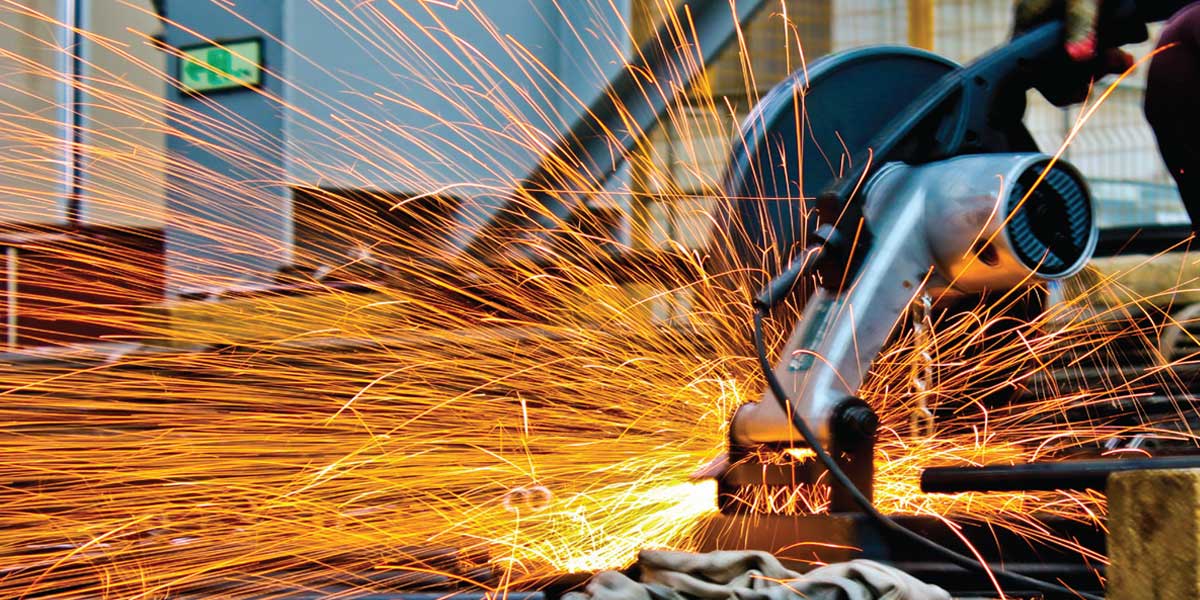Industry players list the gaps in the availability of steel components and grades in India.?
“While much of the building steel requirements are fulfilled, extra-large steel sections are generally imported. This is also relevant in infrastructure projects where large-sized steel sections are needed. We lack a common platform or portal disseminating information about the availability of steel of different types and sizes with different manufacturers.”
- Ashish K Jain, Partner, AEON Integrated Building Design Consultant
“During the fabrication of heavy steel structures for rail and road bridges especially, there is a major requirement for steel plates used in the primary structure and also a minor requirement for secondary steel structures in the form of rolled sections like angles, beams and channels, which weigh between 2 mt and 10 mt. Steel manufacturers require a minimum order quantity of about 100 mt to manufacture rolled sections of steel grades such as
E350 and E410. This results in inordinate delays in arranging for secondary steel structures. So while the primary steel market is mature, the secondary steel market needs to be developed.”
- Rai Singh Malhi, Quality Manager,
Heavy Steel Structures, HMM Infra
“We are almost self-sufficient for light engineering works but especially for heavy engineering, or what we call infrastructure projects, we need larger sections and thicker plates. For bridges or long spans for industrial structures, we need parallel flanges or built-up sections. Jindals and SAIL have only just started making parallel flanges but we need those in large numbers, we need more manufacturers and more capacity. Coming to plates, we are self-sufficient in plate thickness but getting and transporting large quantities of plates of 60 mm, 80 mm,
100 mm, for large projects, is challenging. Getting true flat
(horizontal) plates is another challenge.”
- Atul Bhobe, Managing Director, TPF Engineering
“More than 60 per cent of the steel produced in India is rebars and another 6-7 per cent is steel angles, beams and bars for the construction industry and transmission towers.”
- Rajib K Paul, Director, National Institute of Secondary Steel Technology
“No new qualities of steel for construction purposes have been introduced in recent times in India. Our building construction material industry still remains primitive unlike the developed world. High performance steel plates like JIS G 3140 (Japanese standard) and weathering steel for bridges and high rise buildings are yet to feature in India.”
- Rajib K Paul, Director, National Institute of Secondary
Steel Technology
“Steel in different forms like plates, rolled sections, universal sections and girders is available in the country within a reasonable timeframe, however, some special sizes or high strength steel like 450 mPa is not readily available, only after pre-ordering, when it takes a lag of typically 8-10 weeks, which is long
for projects.”
- Ashish K Jain, Partner, AEON Integrated Building
Design Consultant
“In rail projects, very high grades are not used due to fatigue. Beyond that, most grades of steel are available for rail civil works, with the exception of UIC 65 rails for track and grades tested at zero degrees or at below zero degree temperatures. It depends from project to project but mostly the rails used in tracks are imported.”
- Sandeep Gulati, Regional CEO, South Asia and MD, Egis India
Reviewing grades
“Our rolled sections for years altogether have stopped at
ISMB 600 or ISHB 600.”
- Atul Bhobe, Managing Director, TPF Engineering
“The availability of steel from primary suppliers is still a challenge as compared to the overseas market. Steel grades up to E350 are commonly available. However, very few mills are producing E450.”
- Abhijeet M Kulkarni, Country Director, Structures, Buro Happold
“The two most prevalent grades of steel in India for structural steel sections are E250 and E350, with the former being more readily available while the latter is preferred for large span heavy steel construction but is in limited supply because it is made by only a handful of domestic producers.”
- Vijay Tripathi, Head (Structural Design), Shapoorji Pallonji
Developments in steel
Can infrastructure developers expect these missing gaps in steel availability to be filled anytime soon?
Steel producers are developing newer,
higher strength grades of steel using thermo mechanical control processes, observes
Dr Mukesh Kumar, Director, Steel Research & Technology Mission of India (SRTMI), under the aegis of the Ministry of Steel. “Ongoing R&D focuses on developing High Strength Low Alloy Steel (HSLA) and Advanced High Strength Steel (AHSS) with higher yield strength and toughness, coated steel for buildings and infrastructure, weathering steel for coastal areas, electrical steel, special rails like head hardened rails and alloy steel for the automobile and other sectors.”
Dr Kumar hopes this development may make steel the preferred choice of construction and improve the per capita consumption of steel from 74 kg to around 155 kg by 2030, as envisaged in the National Steel Policy 2017.
Another positive according to Abhijeet M Kulkarni, Country Director, Structures, Buro Happold, is that “new players like ArcelorMittal have entered the Indian market and recent news indicates that Posco will too, soon.” However, he expects this additional supply to take about
five to eight years to stabilise and make an impact given the increase in demand.





















